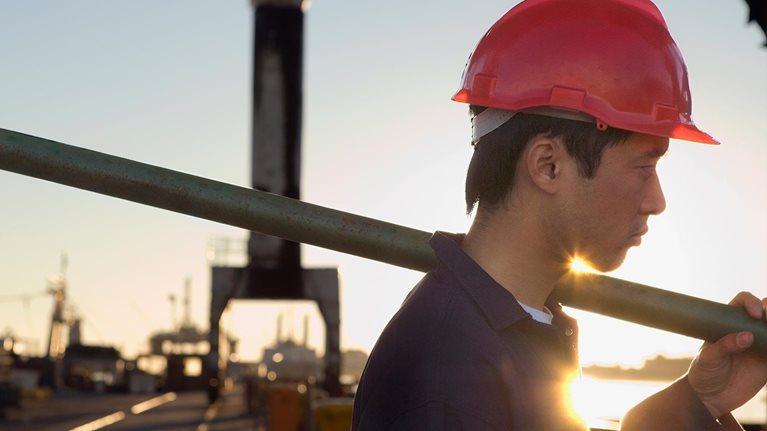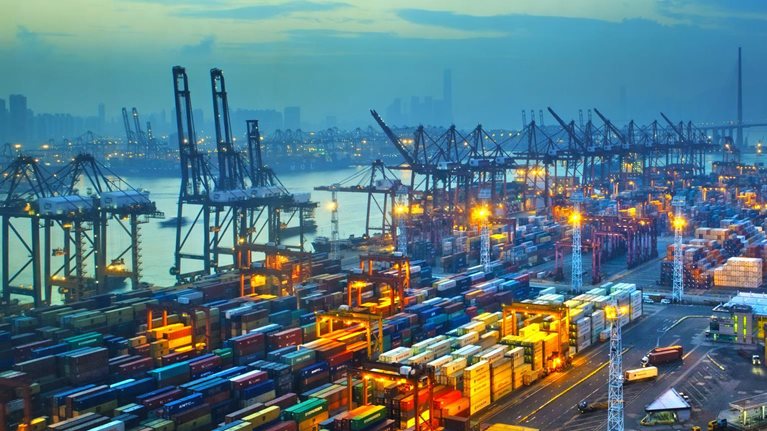When Kone entered China’s elevator market, in 1996, the Finnish multinational was embarking on a journey of extraordinary growth, with high-rises proliferating across China’s urban landscape. Today, the country provides around 35 percent of Kone’s annual revenue, which in 2015 hit €8.6 billion. Bill Johnson began serving as country manager of Kone’s China division in 2004 and in 2012 became the executive vice president in charge of the company’s newly formed Greater China division. In this interview with McKinsey’s Allen Webb and Jonathan Woetzel, Johnson shared his thoughts on China’s next phase of development, on the growth of services, and on the growing role of digitization throughout Kone’s Chinese business.
The Quarterly: Tell us a little bit about your personal experience with the Chinese growth slowdown.
Bill Johnson: There clearly has been a slowdown in the economy over the last 12 to 18 months, and it’s really begun to impact the elevator business. Last year was down about 5 percent in terms of units ordered, and this year we see another 5 to 10 percent decline coming in our market.
Most of our big customers are cautiously investing in the market and adjusting their development and building plans accordingly. They’re pulling back; they’re waiting. There’s still a lot of money in the system, but it’s being deferred for the time being until there’s a little bit more clarity about which way the economy is going.
China is still a critical market for us; it’s the largest market in the world by a factor of ten. The second-largest market is less than 10 percent of the China market. So we’re not backing off. In fact, we’re looking for opportunities to accelerate some of the things that we’ve been doing.
The Quarterly: What are some of those priorities that you want to push on even harder?
Bill Johnson: Digitization is clearly one of the areas that we’re looking at, and it comes in two separate streams. One is the hardware side, the equipment; and the other is the services side.
For example, with our new remote monitoring, customers can see where our people are at any given time and how their equipment is being maintained—all on their mobile device. This gives them a higher level of connection with us, and that has a lot of value, especially for professional property-management companies.
We’re also increasing our service business and bringing on new people. Getting them up to speed with our technology takes time, so we’re always looking for ways to shorten that education process. We’ve launched new mobile-training tools that allow our people in the field to receive training and tips on their devices throughout the day. We’re able to send out videos that cut our work processes into discrete activities, demonstrated by current employees. We’re also able to provide updates on what’s happening with customers, and we can adjust an employee’s work flow during the day, depending on any issues that happen with customers elsewhere.
So for us, it’s not just about the connection with the customer; it’s also about increasing the technology capabilities of our people. I’m still hiring nearly 2,000 people a year here in China, and I don’t see that slowing down for the next couple of years. In fact, I believe that will accelerate because of digitization.
The Quarterly: Do any of these innovation opportunities solve pain points unique to the Chinese market?
Bill Johnson: Absolutely. One of the things to remember is that in Asia, the density of floors tends to be higher than in most places in Europe or North America. You have many more people per square meter here in Asia. You don’t see those densities anywhere else, except maybe for trading floors in New York City. So you need what’s called the right dispatching. That means using algorithms that can learn how people move throughout the buildings and keep the elevators operating efficiently.
We have other innovations in what’s called people-flow intelligence, which relates to the traffic of people throughout a building. One of the things we’re looking at is how to help our customers design their lobbies so people flow seamlessly through security, entering and exiting the building in a comfortable way.
The Quarterly: What kind of changes are you making on the hardware side to solve these issues?
Bill Johnson: We have several hardware innovations to support the smooth flow of people in densely built cities. One of my favorites is what we call UltraRope, which is a carbon-fiber rope that significantly reduces the moving masses in the elevator system. It enables travel to heights that were not possible before—up to 1,000 meters—simply because the traditional steel ropes were so heavy the walls would not support them. Before, to get up to more than 500 meters, a passenger had to take several elevators, with a waiting time in-between. UltraRope has several other benefits. It’s more durable than traditional steel ropes and doesn’t need to be replaced as often, reducing the need for repair periods when fewer elevators are operating at any one time in a busy building.

Meeting China’s productivity challenge
The Quarterly: You’ve got a bunch of R&D going on China. Could you say a little bit about those activities?
Bill Johnson: Our R&D center in China—now our second-largest R&D center in the world—is headed by one of our own homegrown Chinese employees. It works in very close cooperation with our global R&D center, as well as sister R&D centers in India, in North America, and in Europe.
So now we can really do a lot more product development and basic research here, testing mid- and high-rise products in China—including the fastest high-rise product that we’re going to offer anywhere in the world. What’s interesting about China is that when customers are looking to buy an elevator, they want to go and see the supplier directly and learn about the latest technology. When they come see our R&D center and our test tower, they say, “Wow. This company has really made a commitment to this market, to me as a customer.” It lends credibility to our story here in China.
The Quarterly: Many large global organizations struggle with communication and complexity. Are there any solutions that you’ve found particularly helpful in dealing with cross-border issues?
Bill Johnson: Communication is critical, but the challenge is to achieve the right level of communication without disrupting our ability to complete our daily tasks. The critical issue for us—something we invested in a number of years ago and is really paying off more and more—is ensuring that we have the right processes in place. We got clarity early on, and we set this down on paper—taking as much of a pause as we could and saying, “OK, let’s get these processes down and make sure that they make sense and work well for us throughout the organization.” We took the time to define what is common to all Kone units worldwide and what could be adapted to local conditions. So we do things a little bit differently here in China, mainly to meet customer expectations, but in the grand scheme of things we use a common language and approach.
The Quarterly: How worried are you about exports from local Chinese competitors heading out into some of your key developed markets overseas?
Bill Johnson: We take this very seriously, but it’s still early days for a lot of these local Chinese companies. In my experience, running a global operation is very different from running a domestic operation. Our products are not the kinds that you can just ship and forget. They require support throughout the life cycle—during installation, during servicing. You’ve got to supply technical documentation. You’ve got to make sure that you have spare-part support. To build up a global organization like that, or even a regional organization, is a huge investment and takes a lot of time.
It also requires a certain culture change for a number of these companies. We’re already seeing some of them in the early stages of doing that, so we don’t underestimate the potential of our local competitors. They’re pretty savvy, and they’re very fast.
The Quarterly: I’m curious to know whether you see a shakeout coming either in equipment or in services, given the number of players and the market slowdown?
Bill Johnson: When you look at the equipment side, we are very asset light. By that, I mean we manufacture the components we consider core Kone technology and outsource the other components. This means we can very flexibly adjust our capacity if needed. So when people say, “Oh, there’s overcapacity in the elevator business,” we kind of scratch our heads and say, “Well, that’s not that critical an issue.”
We’ll probably see some consolidation of suppliers, but once things consolidate, new entrants come in thinking that they can do a better job. So far, our sourcing team has done a fantastic job of continuing to reduce costs and take advantage of the softened market.
When you look at the service side, there are about 6,000 companies—these are often just people who have a couple of hundred units that they’re servicing or a property-management company that’s got a little elevator-service company. Digitization will put a lot more pressure on the smaller, less digitally capable companies. And that should contribute to a definite shift back to the OEMs.
In China, the OEMs only account for about 25 percent of the aftermarket business. The OEMs are likely to increase this percentage of aftermarket service for two reasons. One, we’re all going to move toward digitization. And two, as the new-equipment business slows down, OEMs will say, “Hmm, we need to make money on services, as we do in more mature markets around the world,” where services typically make up 50 percent of the business. Our service business, for example, still only represents about 10 percent of our overall revenue. So we’ve got a lot of opportunity in this area.
The Quarterly: Why has it taken a while to enlarge the service business in China?
Bill Johnson: It isn’t so much that service hasn’t been doing the job. It’s that new equipment has just been so strong that you have a slightly different proportion here than you have in the rest of the world. Service is like a glacier—it builds up over time, and it moves along. And it just keeps getting bigger and bigger. But it moves at a much different pace than the new-equipment market.
The Quarterly: Ten years from now, if you look back, do you think this recent period will seem like a blip, or is it a change in the growth trajectory that will continue?
Bill Johnson: This is probably more the new normal—though once there’s a little bit more clarity about the direction of the economy and the social situation here, then there will be more opportunities for investment.
For now, though, on the real-estate side, there’s still a lot of unused inventory that needs to be absorbed. It’s mainly in the low-tier cities. In higher-tier cities, there is often too little inventory, and pricing is getting too high. So there are some imbalances that need to be worked through, and I suspect China will be struggling with those imbalances for a number of years. That’s just going to be part of the process. We saw a unique period here in China, and I think the days of easy double-digit growth are over.
But in the years to come, the fundamental demand drivers in the industry will remain rather strong—these include urbanization, the middle class’s demand for higher housing standards, and the ongoing upgrades to building stock in China’s cities. The country will undoubtedly remain the world’s largest elevator and escalator market for some time. And I believe that larger, more tech-savvy companies will differentiate themselves and win here.



